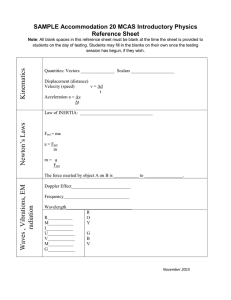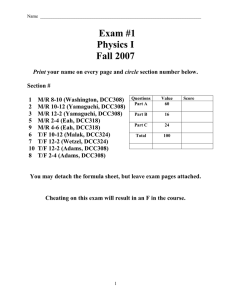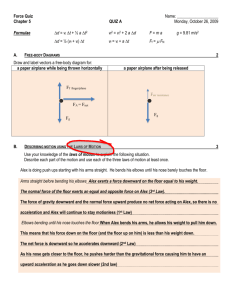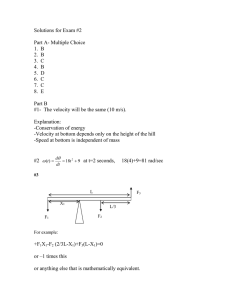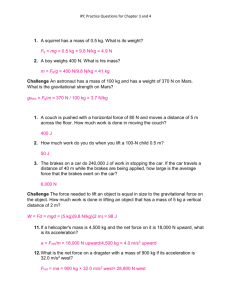PHYS-1100 PHYSICS I ...
advertisement
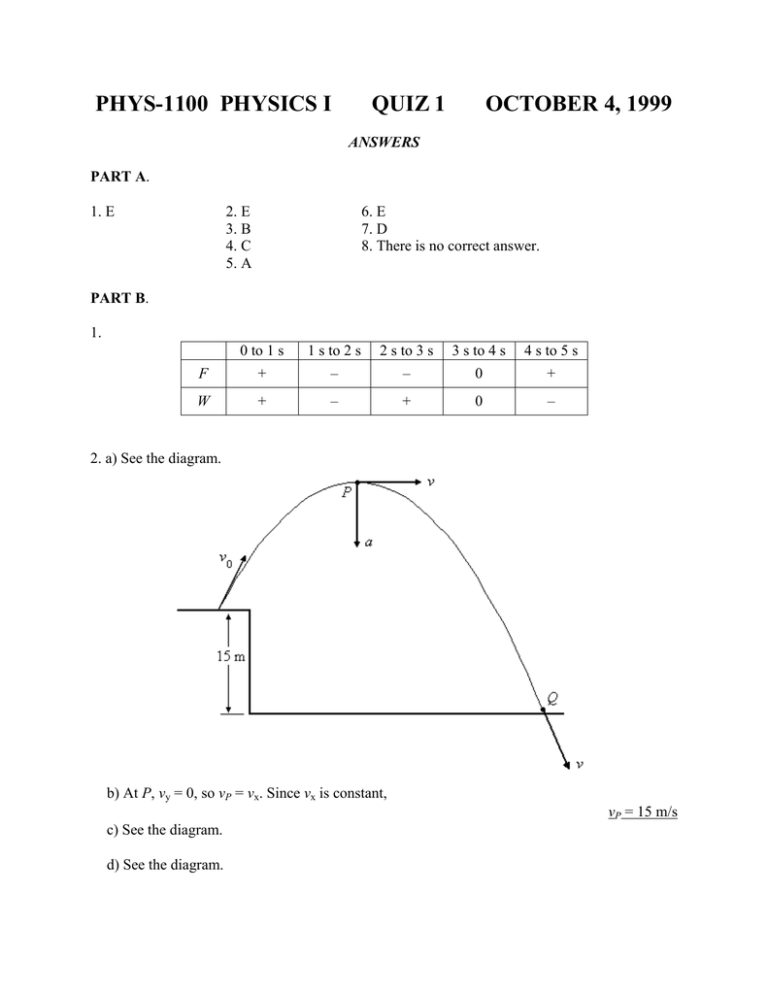
PHYS-1100 PHYSICS I QUIZ 1 OCTOBER 4, 1999 ANSWERS PART A. 1. E 2. E 3. B 4. C 5. A 6. E 7. D 8. There is no correct answer. PART B. 1. 0 to 1 s 1 s to 2 s 2 s to 3 s 3 s to 4 s 4 s to 5 s F + – – 0 + W + – + 0 – 2. a) See the diagram. b) At P, vy = 0, so vP = vx. Since vx is constant, vP = 15 m/s c) See the diagram. d) See the diagram. PART C. 1. a) b) From the force diagram, Fnet = F – mg = 30 N – (0.50 kg)(9.8 m/s²) c) Fnet = ma, so a = Fnet /m = (25 N)/(0.50 kg) Fnet = 25 N ¯¯¯¯¯¯¯¯¯ a = 50 m/s² d) Conservation of mechanical energy can be applied to find the maximum altitude that the ball will reach. It will rise until its kinetic energy decreases to zero, and it has only potential energy. v2 (4.0 m/s)2 K U 0, or 12 mv 2 mgy 0. Then, y 2g 2(9.8 m/s2 ) y = 0.82 m = 82 cm The same final equation, and numerical result, can be obtained using the kinematic equations for constant acceleration. e) DOWNWARD. Only the ball’s weight exerts a force at this point, so the acceleration is downward. f) Apply conservation of mechanical energy to the process of lifting the ball to point P. K + U = 0, but the potential energy has two parts, due to the spring and due to gravity. Then, K + Usp + Ugr = 0. As the ball goes up, Ugr is positive, and Usp is negative. Ugr = mgd and Usp = – ½ Fd, where F is the maximum force exerted by the spring. (This is what was done in class to calculate the energy in the “conventional bow”.) Then, mv 2 2 2 1 1 mv mgd Fd 0 , o r, ( F 2 mg ) d mv . Then, d 2 2 ( F 2mg ) d (0.50 kg)(4.0 m/s) 2 [ 30 N 2(0.50 kg)(9.8 m/s 2 )] d = 0.40 m = 40 cm The potential energy change of the spring could be calculated from: Usp = – ½ kd² where k = F/d.
